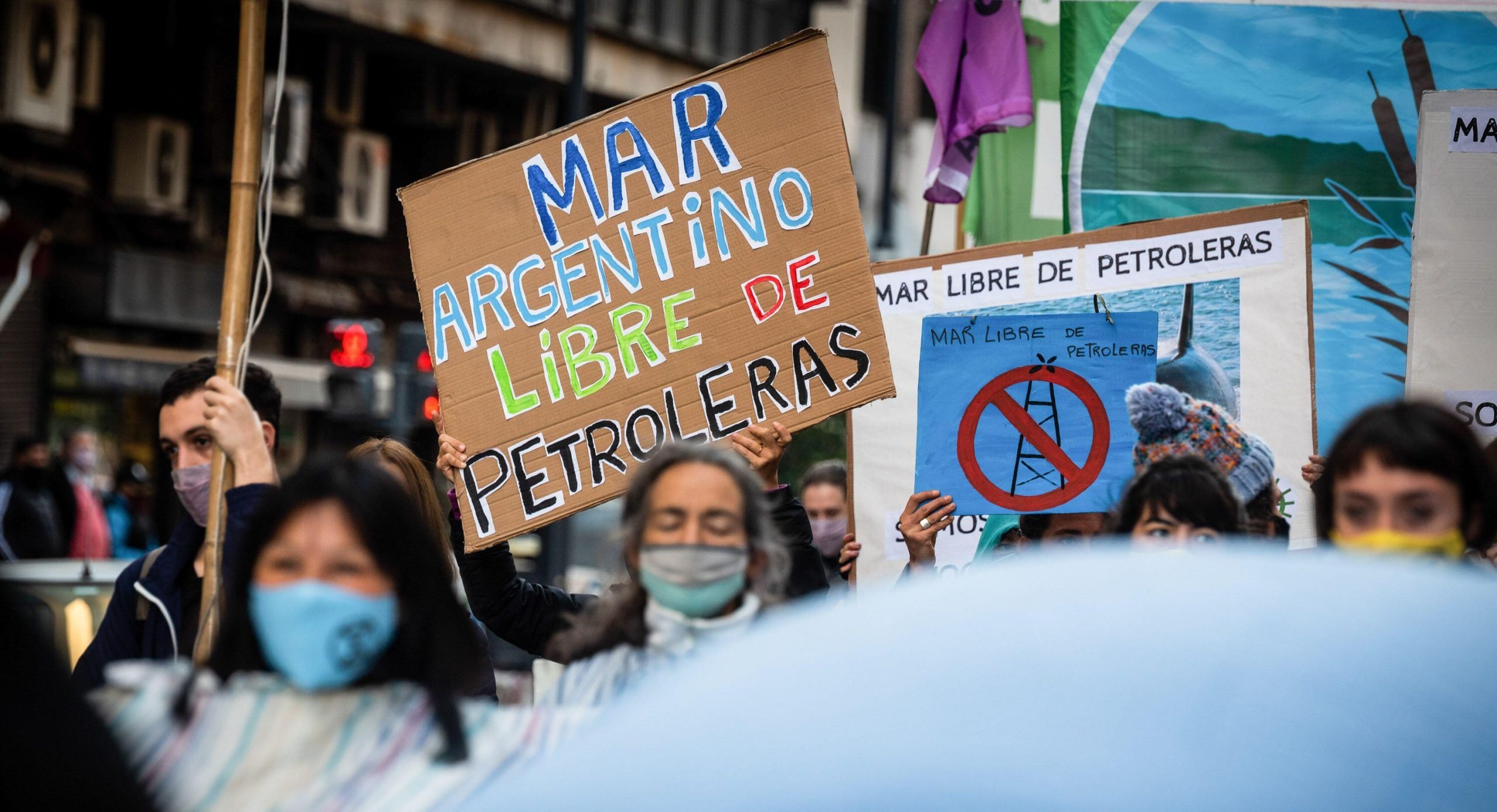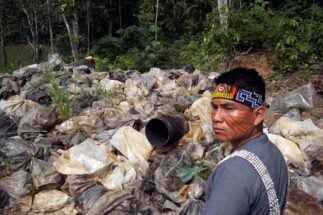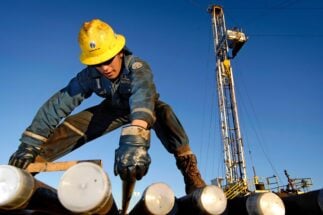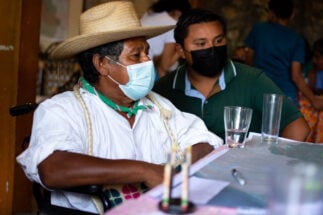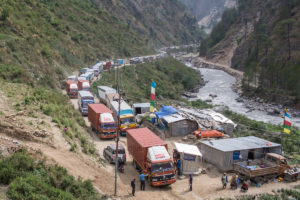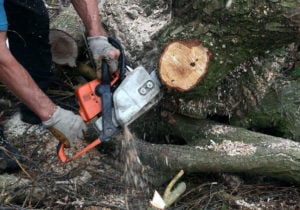To this day, it is not fully certain whether gas or oil will be found in the deepwater subsoils off Argentina’s coast. Even so, 13 companies have so far signed agreements with the government to explore and exploit a large area in the north of the nation’s waters, and another in the southern sea, near the Falkland (Malvinas) Islands.
But already at this early stage, conflicts have emerged between civil society, the state and the companies, several of which have previously been involved in damaging environmental incidents in other parts of the world.
While there has been a substantial decrease in ocean oil spills in recent decades, civil society still has cause for concern over offshore developments in Argentina. The country has some limited experience in shallow-water offshore operations, as well as data on spills, but several organisations – and even the companies themselves – foresee a substantially increased likelihood of incidents impacting the sea.
For now, the intention is to start with a first exploratory well – called Argerich – 300 kilometres from the coastal city of Mar del Plata. On 9 August, the government’s Boletín Oficial announced the approval of a second environmental impact assessment for the project, made by the companies responsible for the project, Norway’s Equinor and Argentine state-owned YPF. The previous assessment had been revoked by the Ministry of Environment and Sustainable Development, following pressure from civil society.
Energy ministry sources told Diálogo Chino that exploration is expected to begin early next year, and that other projects in the country’s waters will seek to enter into operations at various dates between now and the 2050s.
A new age of offshore?
Offshore oil has begun to develop at an accelerated pace in Latin America, notably in neighbouring Brazil. Aldo Duzdevich, advisor and spokesperson for Argentina’s Secretariat of Energy, told Diálogo Chino that it is believed that in the country’s deepsea waters “there could be deposits similar to those found in Brazil, in the pre-salt layer”.
Tapping into Brazil’s Presal, or pre-salt layer, the thick geological formations off the country’s coast that are thought to contain significant oil reserves, has become a regional aspiration since giant hydrocarbon deposits were found close to Rio de Janeiro in 2007. Since that discovery, Brazil has positioned itself among the region’s main offshore hydrocarbon producers, along with Mexico and Venezuela.

To date, the transnational companies with the largest presence in the continent are ExxonMobil, Total Energy, Qatar Petroleum and Shell, as well as Equinor – the company that has profited the most from offshore exploitation of hydrocarbons worldwide.
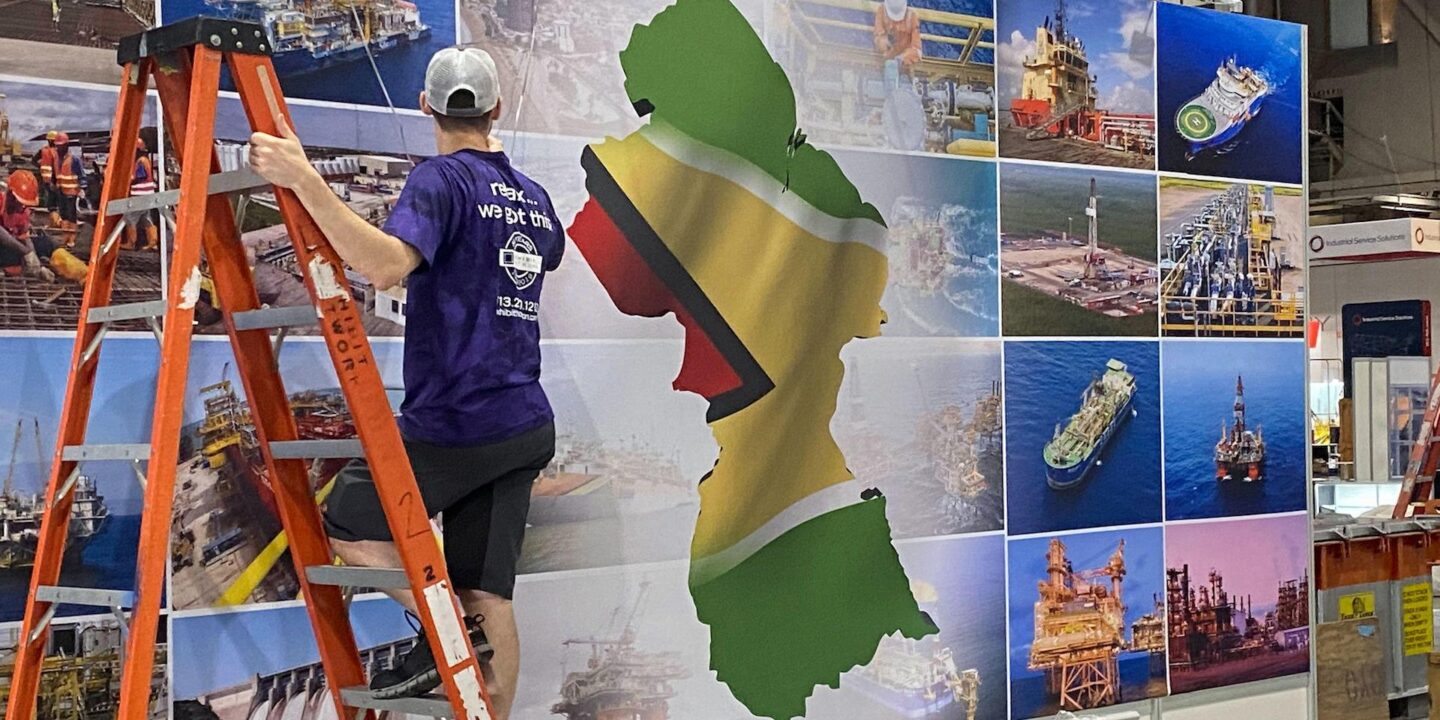
Most of the tenders bought by these companies began in 2016, with investments increasing in the last two years. Cases such as that of Guyana, where ExxonMobil found one of the largest deposits in the region, have encouraged the arrival of new companies and the opening of new tenders.
Although several studies already pointed to the presence of hydrocarbons off the east coast of South America, when large oil and gas deposits were found in 2021 off the coast of Namibia, the likelihood of finding such deposits close to Uruguay and Argentina was reaffirmed. The southwestern coast of Africa is known to have a similar pre-salt layer, with the two continents previously connected in the distant past, in a landmass known as Gondwana.
This information was seemingly sufficient to prompt a raft of tender-signing between 2019 and 2021. Thirteen companies invested more than US$724 million in the purchase of permits to explore and exploit 18 areas mapped in the northern Argentine Sea and in areas close to the Falkland (Malvinas) Islands. But that is only the beginning of the outlay, as operational costs, infrastructure and salaries would later have to be considered, which could double the amount already paid to the Argentine government.
According to a recent study by the consulting firm Ecolatina, the companies’ investment during the entire period of exploration and exploitation would not exceed 10% of the potential total profits. The calculations are hypothetical, and the possible profits for the Argentine state are still uncertain.

Although both shallow- and deep-water offshore wells have existed in the country for some time, many of these are now sealed or decommissioned. The former contribute 20% of the country’s gas production, while output from the latter has been minimal. For the government and its need to solve pressing economic issues, this production is massively insufficient.
Countries such as Guyana have opened their doors to offshore oil in a bid to overcome economic crisis, especially in light of the shocks of the Covid-19 pandemic and Russia’s war in Ukraine. However, environmental groups across the region have denounced the flexibility of regulatory frameworks, which they say can lead to huge negative environmental impacts. These groups include the Guyana Marine Conservation Society, Brazil’s Nem um Poço a Mais (lit. not one more well) campaign, and the Argentine organisations Fundación Ambiente y Recursos Naturales (FARN) and the Observatorio Petrolero Sur (OPsur), among others.
The impacts of offshore oil
Although the frequency of offshore oil spills has decreased over the years, concerns around them and their impacts have not. A 2020 study by environmental organisation Oceana concluded that there has been no substantial improvement in safety and the prevention of offshore disasters.
“There is likely to be a higher risk of spills today, as drilling is taking place deeper and further offshore. We’re talking about more drilling with less safety: it’s a perfect recipe for disaster,” said Diane Hoskins, the organisation’s campaigns director, at the time.
A study by FARN puts a special focus on Equinor, as its operations span more than 30 countries across all continents, and it has been involved in a number of incidents around the world – among them, a series of oil spills in Norway between 2006 and 2021. Eight of the 18 tenders that Argentina offered were obtained by the company.
However, according to Fernando Halperin, communications coordinator of the Argentine Institute of Oil & Gas (IAPG), which represents fossil companies in Argentina, the current concern and allegations surrounding offshore companies are unfounded, as the current technical capacity is “much more advanced than what they had 10 years ago”.
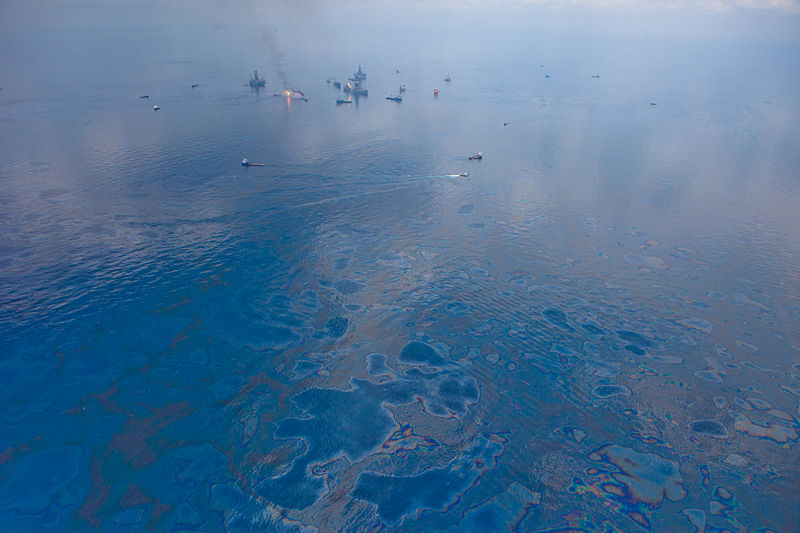
Halperin highlights how companies have recently put great efforts into developing containment protocols, especially after the Deepwater Horizon disaster in the Gulf of Mexico 12 years ago. The explosion and subsequent oil spill had tragic consequences, and the mitigation attempts made by British Petroleum – the company primarily responsible – were said to be insufficient, according to the Oceana study.
Latin America has been the site of several catastrophes involving oil exploitation and marine pollution. Most notable are the spills in the Paria Peninsula and the Guarapiche River in Venezuela, and a spill off the Brazilian coast in 2019, with the most recent high-profile case being that at a Repsol refinery off the coast of central Peru, at the beginning of this year.
Víctor Quilaqueo, an offshore specialist at OPsur, said that while oil spills are one of the most visible impacts of the activity, there are others that are less highlighted, but just as important. “There are gigantic emissions from gas leaks, as was the case in the Gulf of Mexico last year,” Quilaqueo said, referring to a 2021 leak in the gulf that led to a massive ocean fire and caught international attention. According to a report by the Copernicus project, the European Union’s earth observation programme, the industry is responsible for vast releases of nitrogen dioxide that can cause acid rain.
Studies also indicate that the sound emitted by air guns used for offshore exploration can affect living organisms in the sea. “These rumbles emitted at different frequencies can affect reproductive, feeding and orientation cycles,” Michell Havlik, a doctor of marine bioacoustics at Kaust University in Saudi Arabia, told Diálogo Chino.
As drilling takes place deeper and further offshore, we’re talking about more drilling with less safety: it’s a perfect recipe for disaster
Halperin, however, said the industry is aware of this situation and has implemented methods to reduce the impact. “It’s called ‘soft start’. We start with a subtle rumble and gradually increase the power so that if there are any cetaceans or schools of fish, they start to feel disturbed and move out to sea,” the IAPG representative explained.
It is estimated that offshore exploitation in Argentina would last between 25 and 30 years, until the hydrocarbon wells are exhausted or are no longer profitable – an implied endpoint at which the developed offshore infrastructure could eventually become unusable. “Much of the infrastructure in the wells is dismantled,” Halperin explained. Another percentage, according to other organisations, is left as stranded assets or empty shells.
A report by the Colombian Climate Disclosure Initiative warned that this machinery’s production and usage may have an even shorter horizon, in light of efforts towards decarbonisation due to climate commitments.
But for OPsur, it is not only the cost of infrastructure that could affect the economy and the population. “All these impacts especially affect activities in coastal regions. Tourism and fishing can be among the main activities in the area that are overshadowed,” explained Quilaqueo.
Halperin thinks this is an exaggeration. “We are 300 kilometres from the coast – you can’t even see the platforms,” the IAGP representative retorted. However, the construction of ports, refineries, hydrocarbon storage centres, pipelines and transport routes for the industry can displace economic activities already installed in the area, as well as dispossessing the population of land for this infrastructure.
Bad timing for decarbonisation
Argentina has already had oil spills in its waters. A request for information made by Diálogo Chino to the Naval Prefecture, the agency responsible for protecting national waters, revealed that there were at least 17 spills registered between 2016 and 2022. This data coincides with a study done by the National Commission for Space Activities (CONAE), which has a monitoring system for spills on coasts.
17
The number of oil spills in Argentine waters between 2016 and 2022, according to information from the country’s Naval Prefecture
Data is only available for that six-year period. However, according to Law 22.190, Law 24.089, Law 24.292, and Law 25.137, monitoring should have been in place since 1981 to date. The volume spilled, materials and companies involved in these recent cases remain a mystery, as they are still in court. However, following a request for information, the Naval Prefecture reported that the total fines paid for between 2016 and 2022 was just US$19,408.
In its nationally determined contribution (NDC), its commitment to the Paris Agreement on climate change, the Argentine government proposes a scenario for 2030 in which there is a simultaneous growth of fossil fuels, especially natural gas, alongside non-conventional renewable energies. However, since the inauguration of President Alberto Fernández, no new public tenders for solar and wind farms have been issued.
“It is not enough just to have a [decarbonisation] goal for 2030 or 2050, it is essential to draw up a roadmap to achieve it,” write Pía Marchegiani and Andrés Napoli, the directors of FARN, in their latest environmental report. This call for urgency is similar to the tension that orbits between the Ministry of the Environment and Natural Resources and the Ministry of Energy, though political weight tends to lean towards the latter.

In regards to offshore, there is on one hand the claim that it will generate, in an accelerated manner, foreign currency to compensate for Argentina’s economic crisis. On the other hand, there is the need to generate concrete policies to implement an energy transition, regulate hydrocarbon production, and comply with emissions reductions. “In the framework of a state that promotes the advance of hydrocarbons, the capacity for oversight, control and regulation is very limited,” Quilaqueo acknowledged.
In one of the latest releases by the new Minister of Economy, Sergio Massa, measures to accelerate hydrocarbon production in the northern province of Neuquén were announced. Similarly, there has been an opening to investment from the companies TotalEnergies, Pan American Energy (PAE) and Wintershall Dea, which will invest US$700 million to advance with the construction of Fénix, an offshore project in the country’s southern waters. The minister also announced that he will soon sign the extension of the Oldelval and Oiltanking-Ebytem concessions to underpin investments of US$1.4 billion and expand the pipeline system from Vaca Muerta, an oil and gas field in the country’s north, to Bahía Blanca further south.
In a recent interview, Argentina’s climate secretary Cecilia Nicolini spoke of the difficulties in reaching consensus over the 2050 decarbonisation strategy – a complement to the 2030 NDC and something Argentina had committed to present at COP26. While she speaks of collaboration with the ministries of energy, productive development and agriculture, she has not progressed in any agreement with them during the previous or current administration. Even with COP27 just around the corner, there are still no firm details on this strategy, but it has been announced that it will be presented at the summit.
